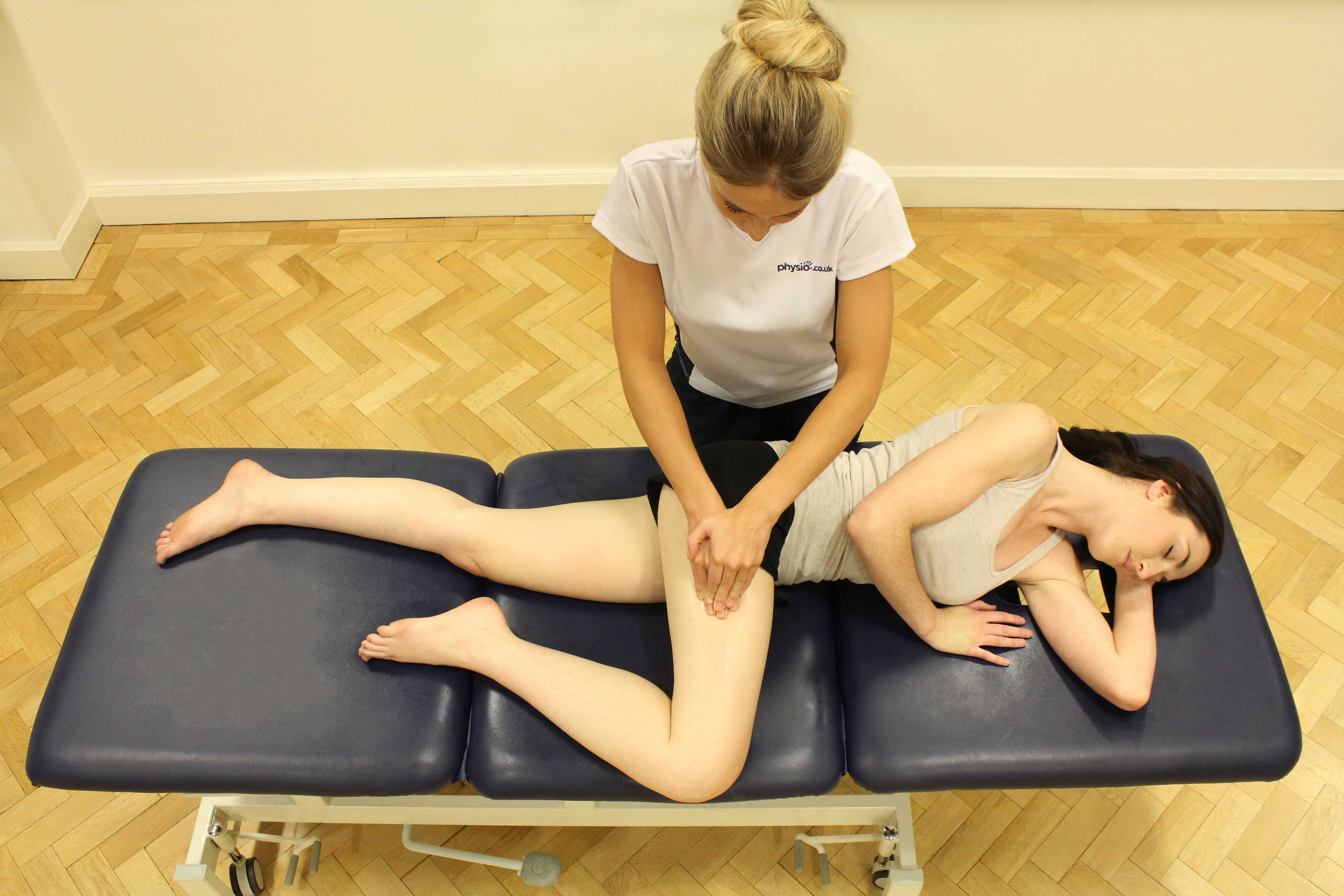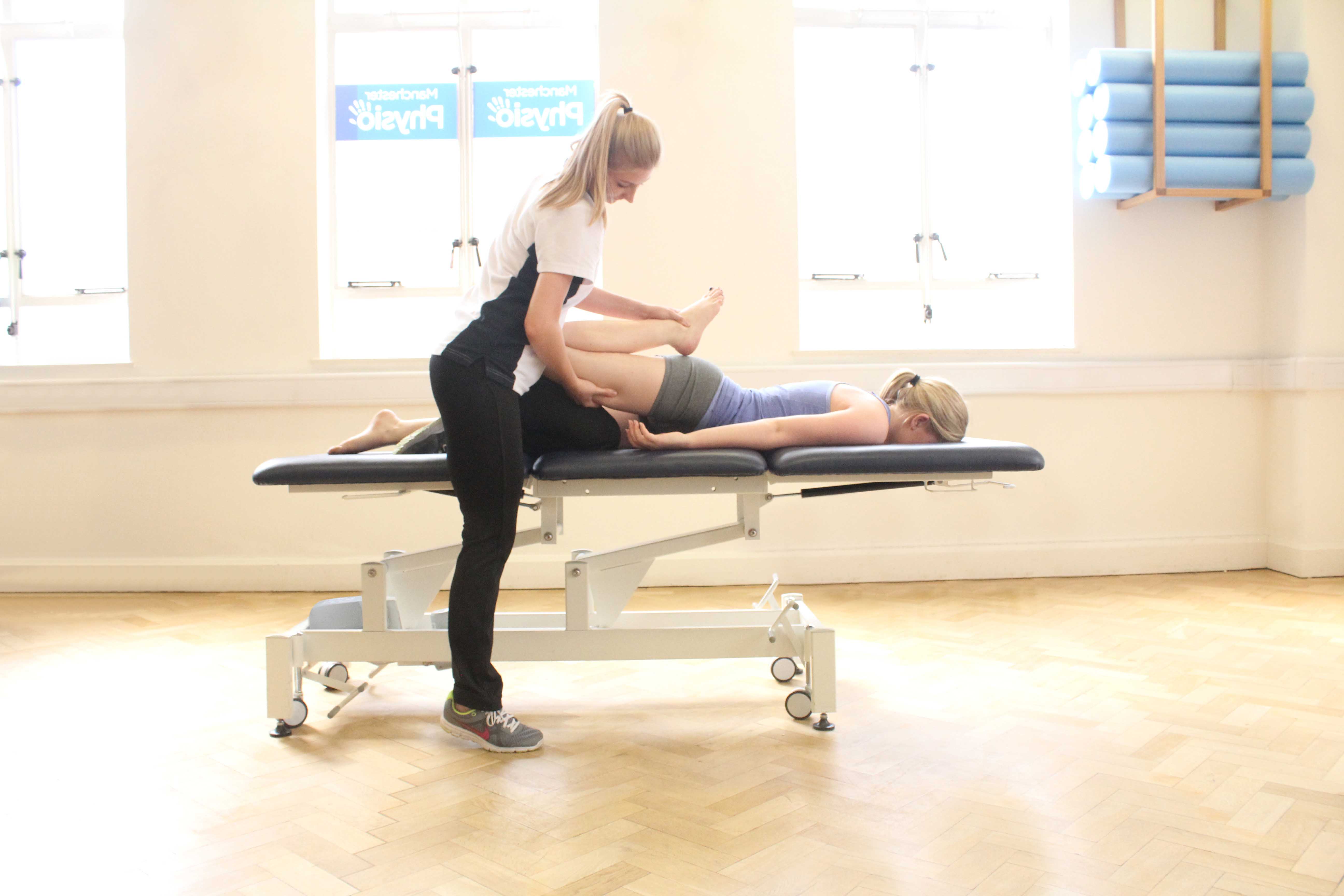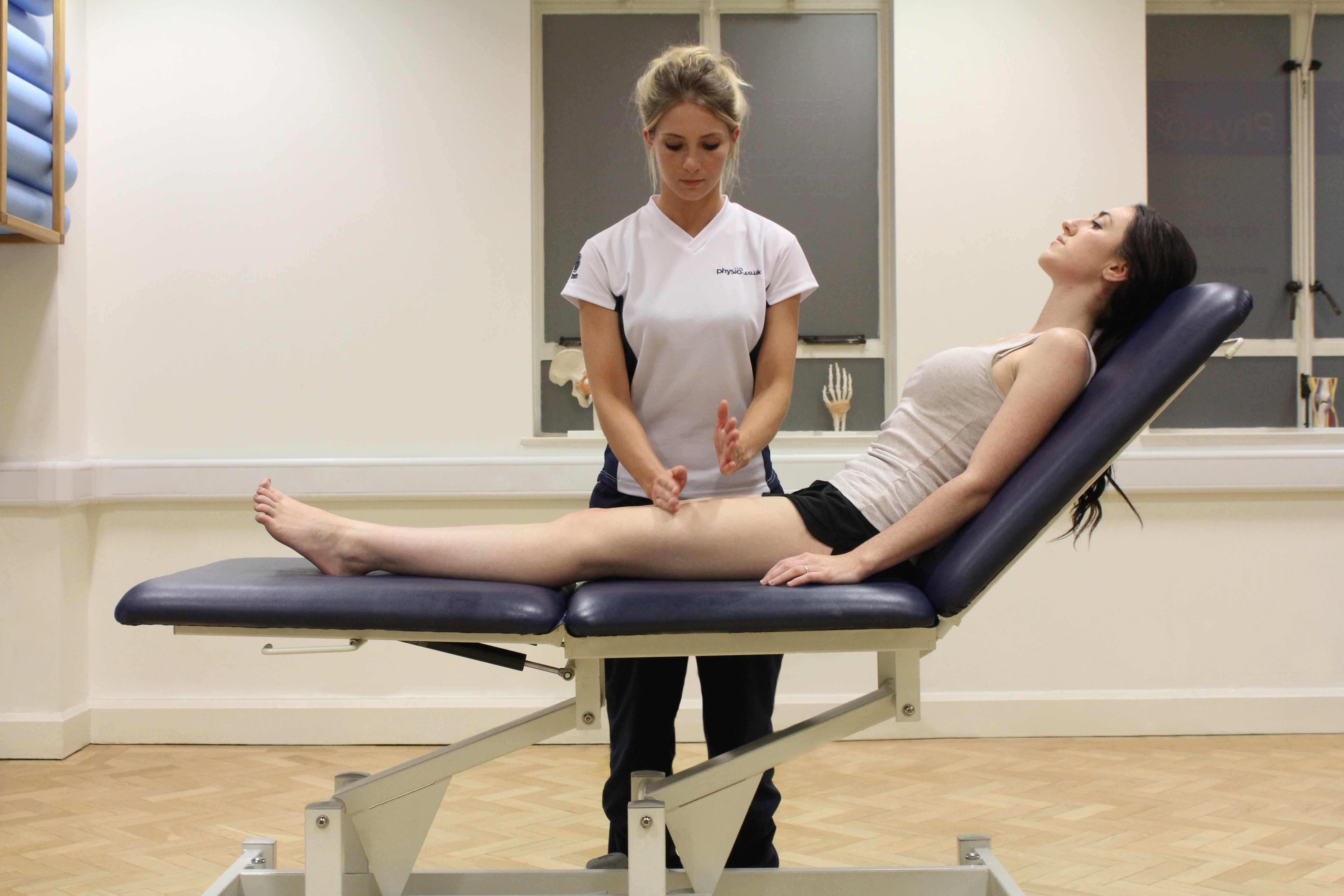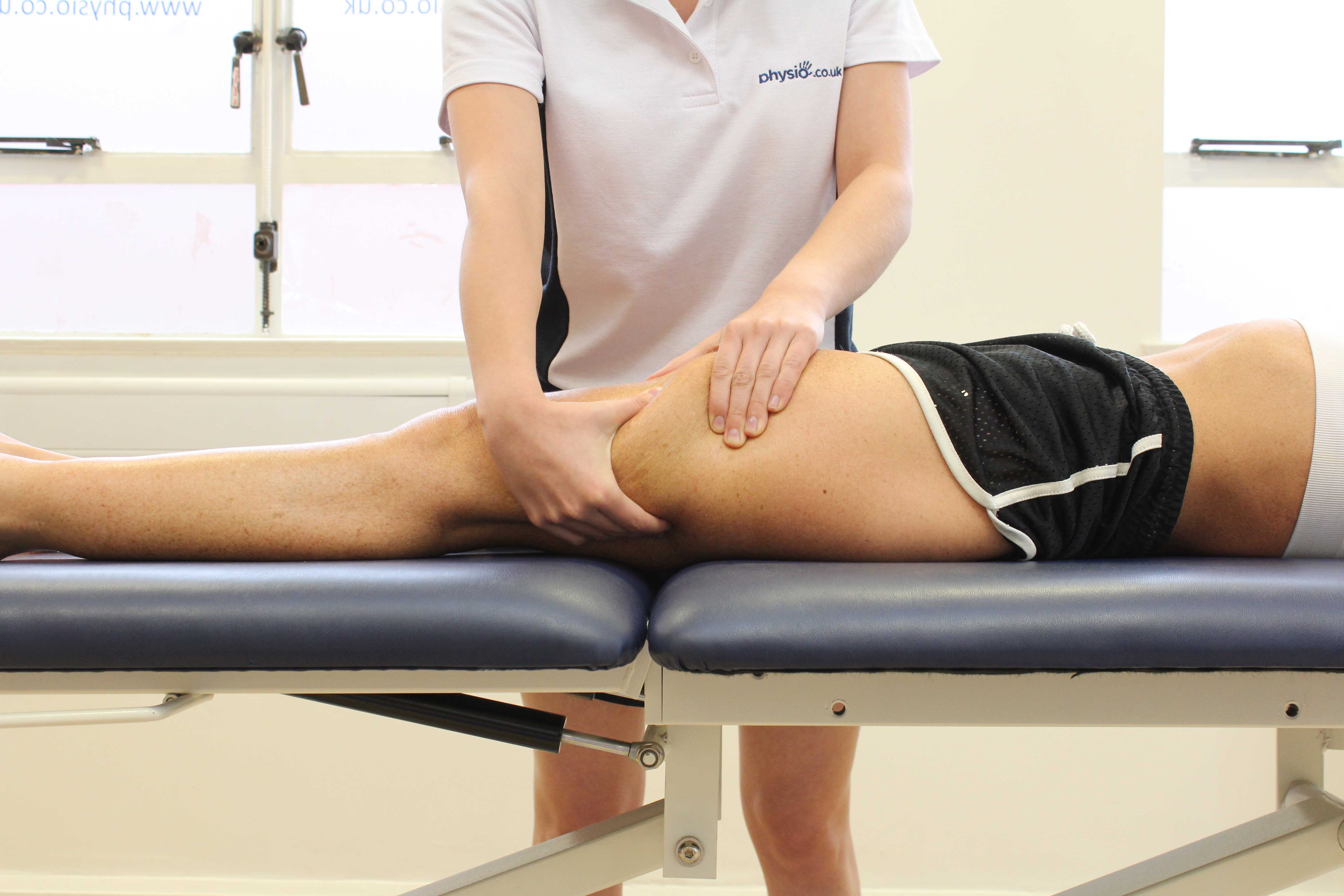Quadriceps Repair Physiotherapy
A quadriceps or quad repair is a surgical procedure to repair a ruptured quadriceps muscle.
The quadriceps is a large muscle at the front of the thigh. The quadriceps is subdivided into four muscles. The rectus femoris is the muscle commonly involved in muscle strain injuries involving the quadriceps, because it crosses two joints (hip and the knee). The rectus femoris works to extend the knee and flex the hip joint. This muscle is commonly injured during sudden contraction for example, in the acceleration phase of sprinting, explosive jumping (eg, long jump), kicking (especially long kicking), or when contracting and meeting a resistance (such as two players kicking a ball at the same time).
 Above: Soft tissue massage applied to the illiotibial band
Above: Soft tissue massage applied to the illiotibial bandMuscle strains are graded 1, 2 or 3 depending on the severity of the damage. The extent of damage or strain will be related to treatment. Grade 3 strain is the most severe and involves rupture of over 50% of the muscle. Grade 3 tears often require surgery.
Early surgical treatment of Grade 3 quadriceps tears is associated with a better outcome. It is, therefore, important to identify and treat ruptures are soon as possible following injury. This should occur within the first week for the best possible recovery.
Physiotherapy treatment following a quad repair is important in order to gain the best functional recovery and get you back to a level you were previously as soon as possible.
 Above: Passive stretch applied to the quadricep muscles by MSK therapist
Above: Passive stretch applied to the quadricep muscles by MSK therapistSymptoms after quad repair
Following a quadriceps repair you will experience pain, stiffness, swelling and difficulty straightening your knee. Your knee will be immobilised using a knee brace for 4-6 weeks and you will be given elbow crutches for 6-8 weeks so you can partially weight bear through your leg.
Physiotherapy after quad repair
After quadriceps repair your knee will be immobilised for 4-6 weeks. Following immobilisation, physiotherapy treatment at Physio.co.uk will restore muscle strength and range of movement in your leg.
A full rehabilitation programme at Physio.co.uk will guarantee the return of full, or near to full, function and help prevent the likelihood of any problems and further injuries in the future.
The rehabilitation after a quad repair is lengthy but commitment to a physiotherapy programme with Physio.co.uk will significantly improve your function and accelerate your recovery.
 Above: Hacking percusion massage of the quadricep muscles
Above: Hacking percusion massage of the quadricep musclesAn extensive graduated programme will be developed and treatment goals set. Treatment goals will include the following:
- To restore a pain free knee joint
- To restore full range of motion (ROM)
- To restore full muscle strength and length
- To re-establish independence with daily tasks
- To promote recovery and quality of life
1-6 weeks
Physiotherapy treatment on the injured leg is limited at this stage as time is needed for the healing process to take place. However, treatment will be focused around general fitness and strengthening exercises in your uninjured leg and upper limb muscles in order to maintain strength and endurance while your injured leg is immobilised.
 Above: Rolling soft tissue massage of the quadricep muscles
Above: Rolling soft tissue massage of the quadricep muscles6-12 weeks
Your programme at Physio.co.uk will begin 6 weeks following immobilisation. At this stage treatment will focus on increasing range of movement in the hip and knee, restoring strength of hip, knee and ankle joints and improving independence with walking. Activities and exercises will include:
- Partial weight bearing exercises
- Crutch training
- Pain relief
- Isometric strengthening exercises in the quadriceps, hamstrings and glutes
- Concentration on end of range knee extension through active knee extension exercises
- Strengthening exercises for hip, ankle and muscles in opposite leg
- Light patella (knee cap) mobilisation
- Passive (assisted) range of movement exercises
12-16 weeks
At this stage, treatment willfocus on a continuation of progression of your rehabilitation from previous weeks. At 3 months full range of movement should be regained in your knee joint. Treatment goals will include muscle strengthening to support the knee and hip, gait re-education and balance training. Treatment will include general fitness and exercises to get you back to your previous level of function. Your physiotherapy will include:
- Full weight bearing exercises
- Gait training
- Strengthening and stretching of quads and hamstrings
- Gentle patella mobilisation
- Balance activities
- Active range of movement exercises
- Begin straight leg raises without resistance for quadriceps strengthening
- Begin stationary bike training with low resistance
- Stair mobility
- Hydrotherapy
16-24 weeks
Physiotherapy treatment at this stage will be focused around more functional and sport specific activities whilst aiming to improve your cardiovascular fitness. Your physiotherapy will include:
- Continuation of exercises from previous weeks
- Gait training
- Balance training
- Agility exercises
- Introduction back to jogging
- Sport specific activities
- Static bicycle (progressed resistance as tolerated)
- Hydrotherapy/swimming
Summary
Physiotherapy treatment should be started as soon as possible following immobilisation for the best possible recovery. Our physiotherapists are experienced in treating individuals followingquad repair. A graduated exercise program will be developed so that you will be able to return to your previous level of ability. Physiotherapy treatment is crucial in order to regain the strength, stability and function in your knee and hip joint following injury.
For more information and to book an assessment call Physio.co.uk now on 0330 088 7800.

 0330 088 7800
0330 088 7800

































